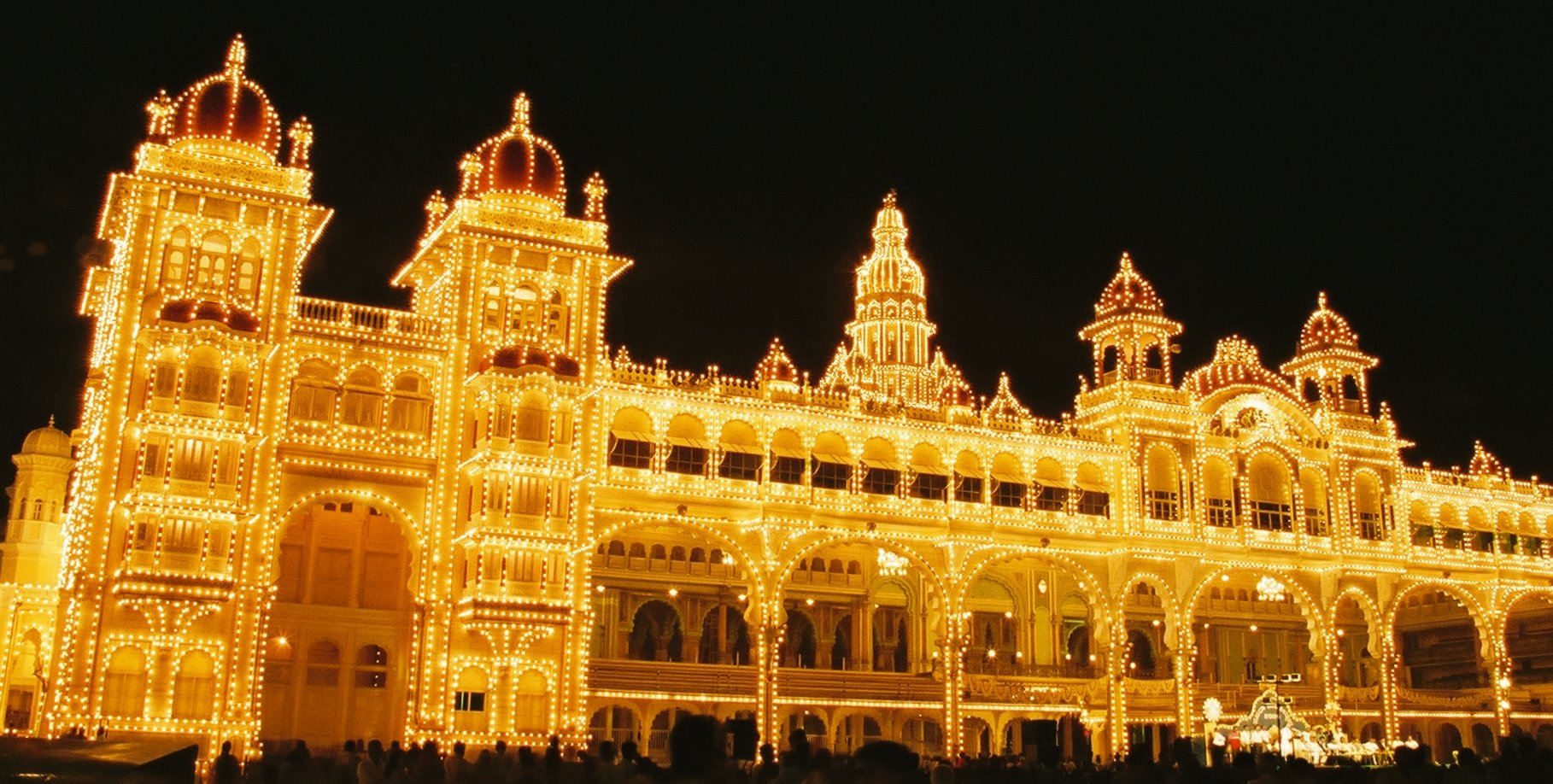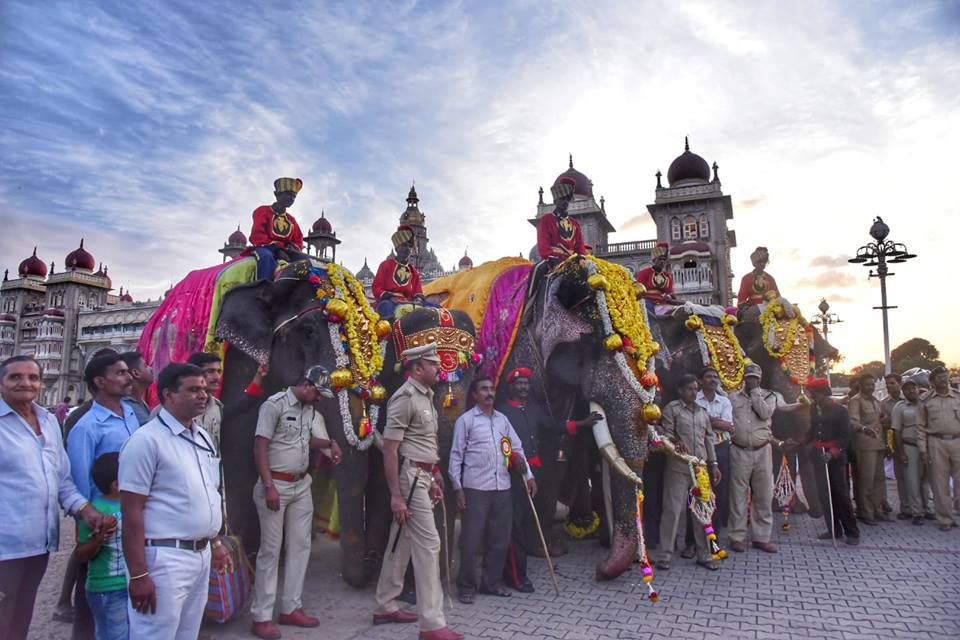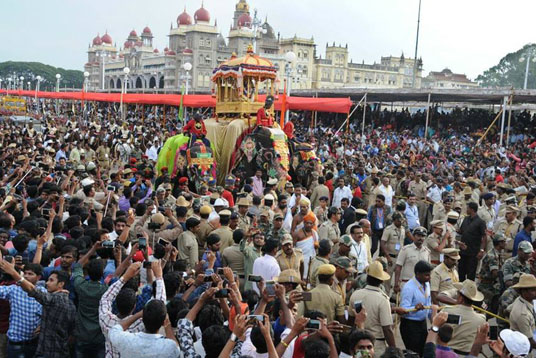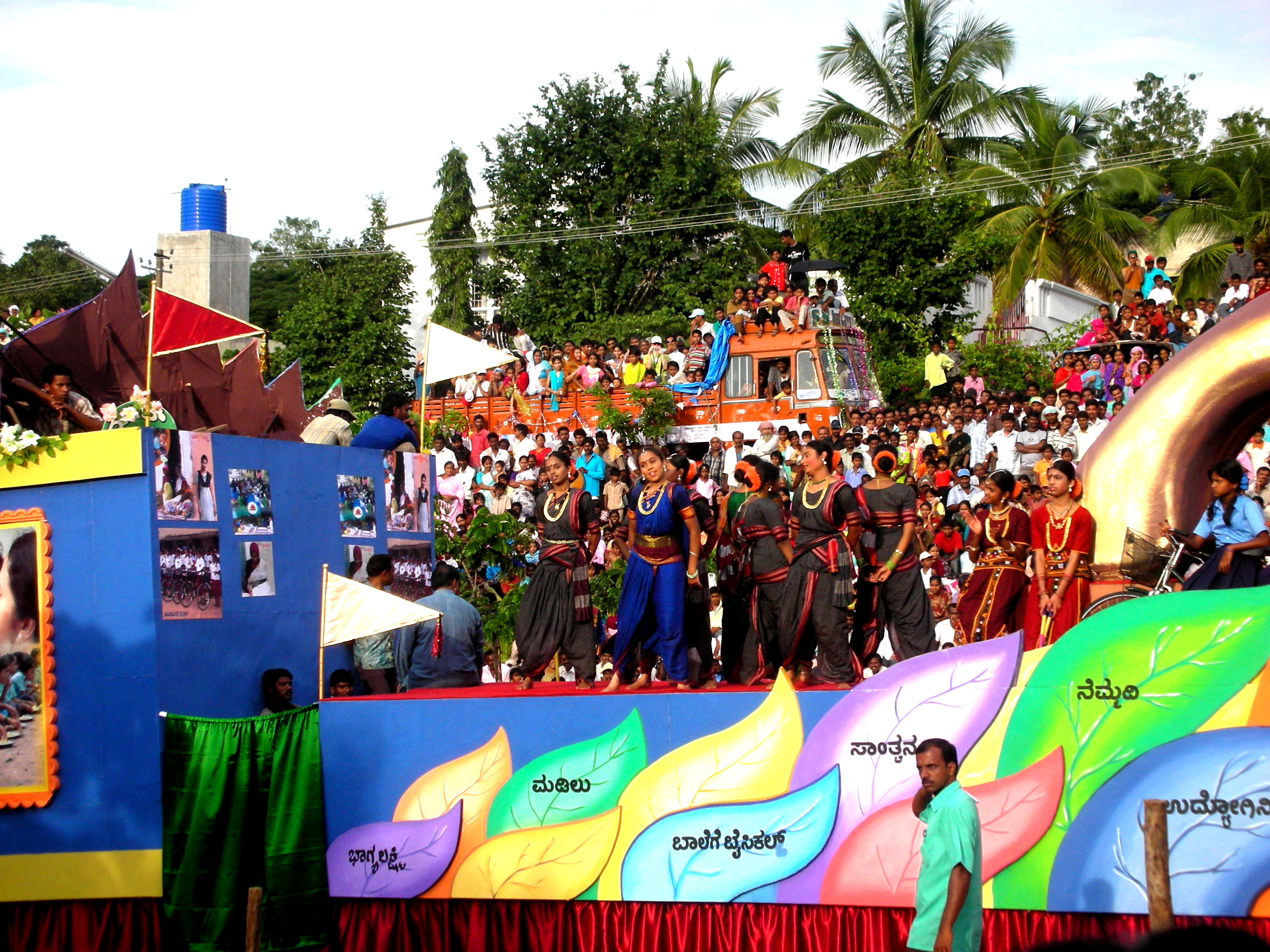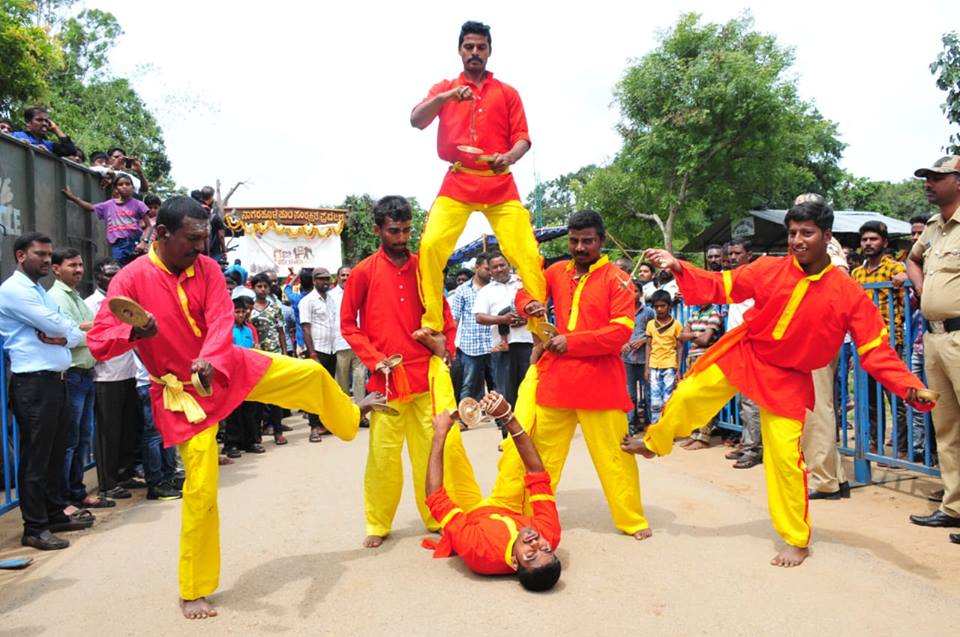India is a land of festivals in which people from all walks of life participate. Dasara of Mysuru (Mysore) is famous all over the world as it is celebrated with pomp and grandeur reminiscent of medieval times.
The entire city of Mysuru gets decked up during Dasara (known as Dushera in northern India), which is celebrated for 10 days. The festivities include a majestic procession, dance, music, varieties of cultural activities and a parade.
The festival of Dasara is celebrated during Navaratri. The word ‘Navaratri’ means nine nights in Sanskrit, nava meaning nine and ratri meaning nights. During these nine nights and 10 days, nine forms of Shakti/Devi are worshipped. The 10th day is commonly referred to as Vijayadashami. According to a legend, Vijayadashami denotes the victory of truth over evil and was the day when the Hindu Goddess Chamundeshwari killed the demon Mahishasura. Mahishasura is the demon from whose name, the name Mysuru has been derived.
Dasara procession
The main attraction of Dasara is the procession which is taken out through the thoroughfares of the city. It is taken on the tenth day on Vijayadashami and is locally known as Jamboo Savari.
The idol of the Goddess Chamundeshwari is placed in a golden howdah on the top of a decorated elephant. This idol is worshipped by the royal couple and other invitees before it is taken around in the procession. Colourful tableaux, dance groups, music bands, armed forces, folklores, the royal identities, decorated elephants, horses and camels form a part of the procession which starts from the Mysuru Palace and culminates at a place called Bannimantap, where the Banni tree (Prosopis spicigera) is worshipped.
During the entire ten-day celebrations, the Mysuru Palace is lit up decked in colourful lights. The festivities begin with the Wadiyar royal couple performing a special puja to Goddess Chamundeshwari in the Chamundi Temple located on the top of Chamundi Hill at Mysuru. This would be followed by a special durbar (royal assembly). It was during the reign of Krishnaraja Wadiyar III in the year 1805, when the king started the tradition of having a special durbar in the Mysuru Palace during Dasara, which was attended by members of the royal family, special invitees, officials and the masses.
This tradition has been continued even now with the current scion of the Wadiyar family, Yaduveer Krishnadatta Chamaraja Wadiyar holding a private durbar during Dasara.
The Dasara festivities were first started by the Wadiyar King, Raja Wadiyar I in the year 1610.
The ninth day of Dasara called Mahanavami; it is also an auspicious day on which the royal sword is worshipped and is taken on a procession involving elephants, camels and horses.
Exhibition
Another major attraction during Dasara is the Dasara exhibition which is held in the exhibition grounds opposite the Mysuru Palace. This exhibition starts during Dasara and goes on till December. Various stalls which sell items like clothes, plastic items, kitchenware, cosmetics and eatables are set up and they attract a significant amount of people.
There are also arrangements for the entertainment of children like Ferris wheels and other rides. Various Governmental agencies set up stalls to signify the achievements and projects that they have undertaken.
History of Mysuru Dasara
Mysuru derives its name from Mahisur as it was called in the past, traces its history back to the mythical past, when Goddess Chamundeshwari of Chamundi Hill, killed the wicked buffalo-headed demon, Mahishasura. This event that marked the victory of Good over Evil is the inspiration behind the Dasara festivities.

